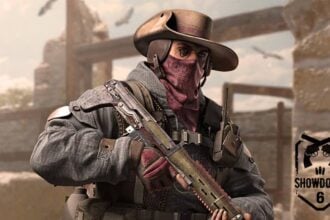In this guide, we tried to put together the best settings for getting the optimized performance on PC for Star Wars Jedi Survivor.
If you are a Star Wars enthusiast, you’re here to embark on Cal Kestis’ latest adventure in Star Wars Jedi: Survivor to the fullest. However, you might be experiencing some performance issues while wielding your lightsaber and traversing through the galaxy. Fear not, for there are some tweaks you can make to your graphics settings to alleviate these problems.
You can also immerse yourself in the game’s stunning visuals, especially if you activate Raytracing settings. While the minimum requirements for the game are likely met for most enthusiasts, optimizing the graphics settings can make another kind of difference. So, without further ado, join me as we explore the settings and optimize for the best FPS. May the FPS be with us!
Read More: Star Wars Jedi: Survivor – Trophies & Achievements
Best Settings For PC in Star Wars Jedi: Survivor
Multiple reports suggest that the journey through Koboh may have hit a bit of a rough patch in terms of frame rate consistency. Even though there is a guide for recommended performance settings, players are still experiencing drops in areas. These areas are reported as the high-rendering ones and density, precisely, in the densely-packed cityscape of Coruscant.

Best Graphics Settings: Visuals
Now, don’t freak out when I say it’s important to run the visual settings on LOW for the smoothest gameplay experience. As several performance issues are overthrowing, it’s important to tweak the graphics settings at Low.
But worry not, for there are still some settings you can play around with to enhance your experience. As our main priority will be maintaining stable frame rates, we will have to be careful not to poke other settings. Beware that turning Foliage Detail to Low may result in some plants not loading properly, so note that down. And below are recommended settings for now to run smoothly until a patch is on the way.
| Resolution | Default |
|---|---|
| Window Mode | Fullscreen |
| Graphics Quality | Low |
| View Distance | Low |
| Shadow Quality | Low |
| Anti-Aliasing | Low |
| Texture Quality | Low |
| Visual Effects | Low |
| Post Processing | Low |
| Foliage Detail | Low* |
| VSync | Off |
| Ray Tracing | Off |
| AMD FidelityFX Super Resolution 2* | Performance |
| Motion Blur | Off |
| Film Grain | Off |
| Chromatic Aberration | Off |
| Camera Shake | 0% |
| Ambient Camera Sway | 0% |
| Ray Tracing | Off |
AMD FidelityFX Super Resolution 2 in Star Wars Jedi: Survivor
So, you know how sometimes when you’re using the Force, it might look a little bit blurry or fuzzy? Well, AMD FidelityFX Super Resolution 2 is like the magic glasses that can make the Star Wars Jedi: Survivor look clearer and more detailed just by using some special technology.
It’s kind of like when you squint your eyes to see something better, but instead of squinting, turn AMD FidelityFX on. And the best part is it boosts performance without making the game run slower.
Now, there are two options: Performance and Ultra Quality. If you want to increase FPS without sacrificing too much in the way of quality, the Performance setting is your go-to. But if you crave stunning visuals and don’t care about the FPS that much, go for the Ultra Quality.
Fix the Low Frame Rate Issue In Star Wars Jedi: Survivor
There are some other steps you can take to be two-step ahead. As the graphics drivers are often updated frequently to keep up with the latest game releases, make sure that you are also using the latest version.
Furthermore, turn off any overlays that are running in the background. You can find Steam, EA, or Radeon overlay running in the background. Make sure to terminate those before launching Star Wars Jedi: Survivor.
And last but not least, terminate any other unnecessary applications in the background. It may not be much it is honest work.
Check out our other guides like, How to Unlock Red Lightsaber, All Mounts, and All the Voice Actors in Star Wars Jedi: Survivor. Until next time!









